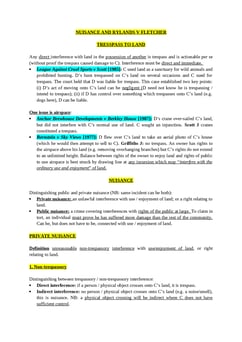D & F Estates v Church Commissioners [1989] AC 177
Judgement for the case D & F Estates v Church Commissioners
Table Of Contents
Plaintiffs had to pay to re-plaster a flat that they had leased upon discovering that Defendant, the owner, had had faulty plastering done, and Plaintiff sued Defendant for the cost of plastering.
HL held that the damage suffered by Plaintiff was purely economic loss, which was not recoverable under tort.
Junior Books was said to be confined to its facts because of the “unique”, albeit non-contractual, relationship of the parties.
Lord Oliver
Anns is to be confined to cases where the builder’s negligence has caused danger to the health and safety of Plaintiff: NOT where it has caused pure economic loss, which is only recoverable within the Hedley-Byrne principle.
-
He also suggested using the ‘complex structures theory’:
That a house is a complex structure comprising many different parts, which are each property in their own right.
Thus if dodgy foundations (product 1) causes damage to the walls (part 2) there has been property damage and the economic loss is consequential rather than pure.
RELATED CASES
For Further Study on D & F Estates v Church Commissioners
Need instant answers? Our AI exam tutor is here to help.
Ask questions 🙋 Get answers 📔 It's simple 👁️👄👁️
Our AI is educated by the highest scoring students across all subjects and schools. Join hundreds of your peers today.
Get StartedSimilar Cases
Related Product Samples
These product samples contain the same concepts we cover in this case.
| Tort Law | Actionable Damage Notes (19 pages) |

